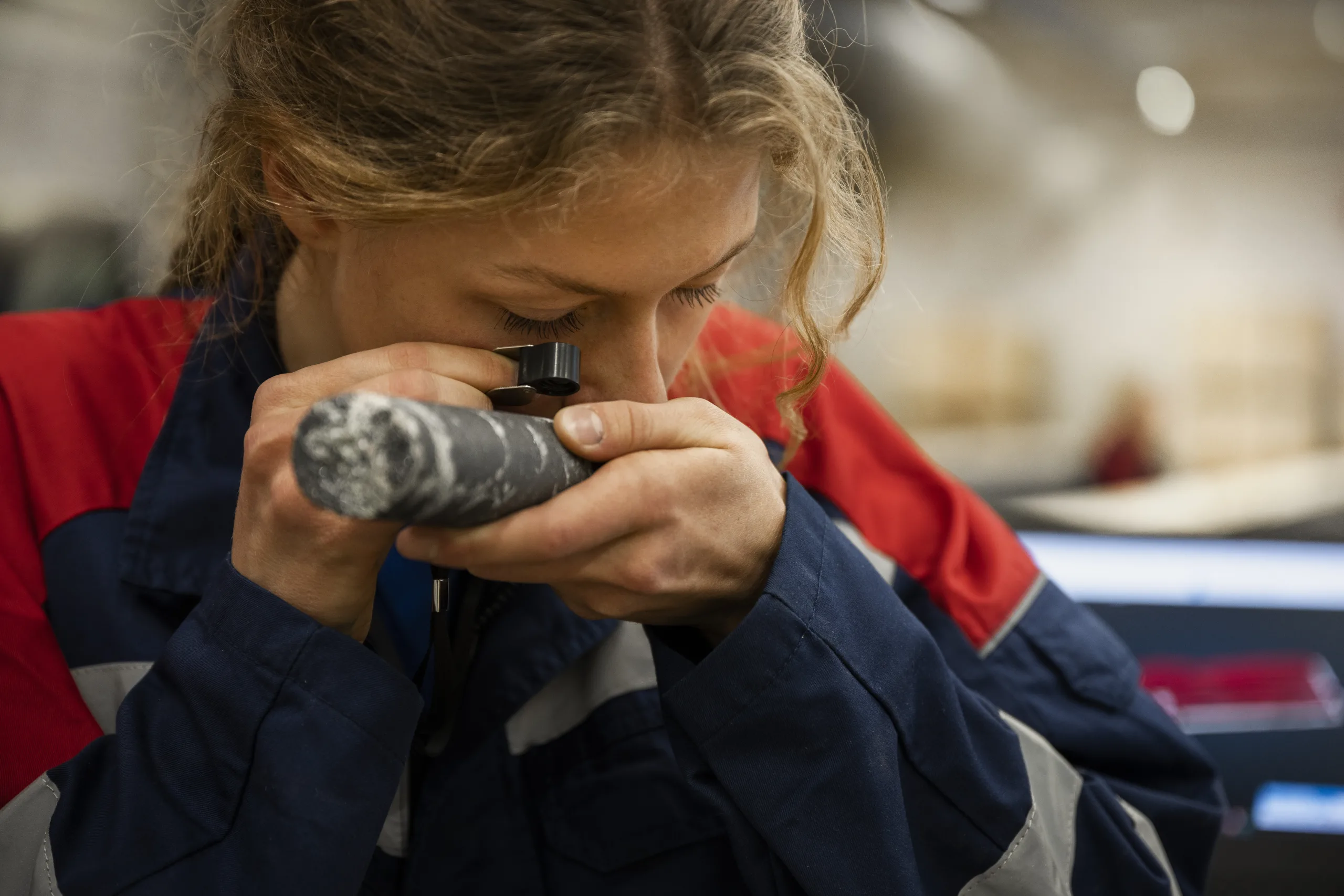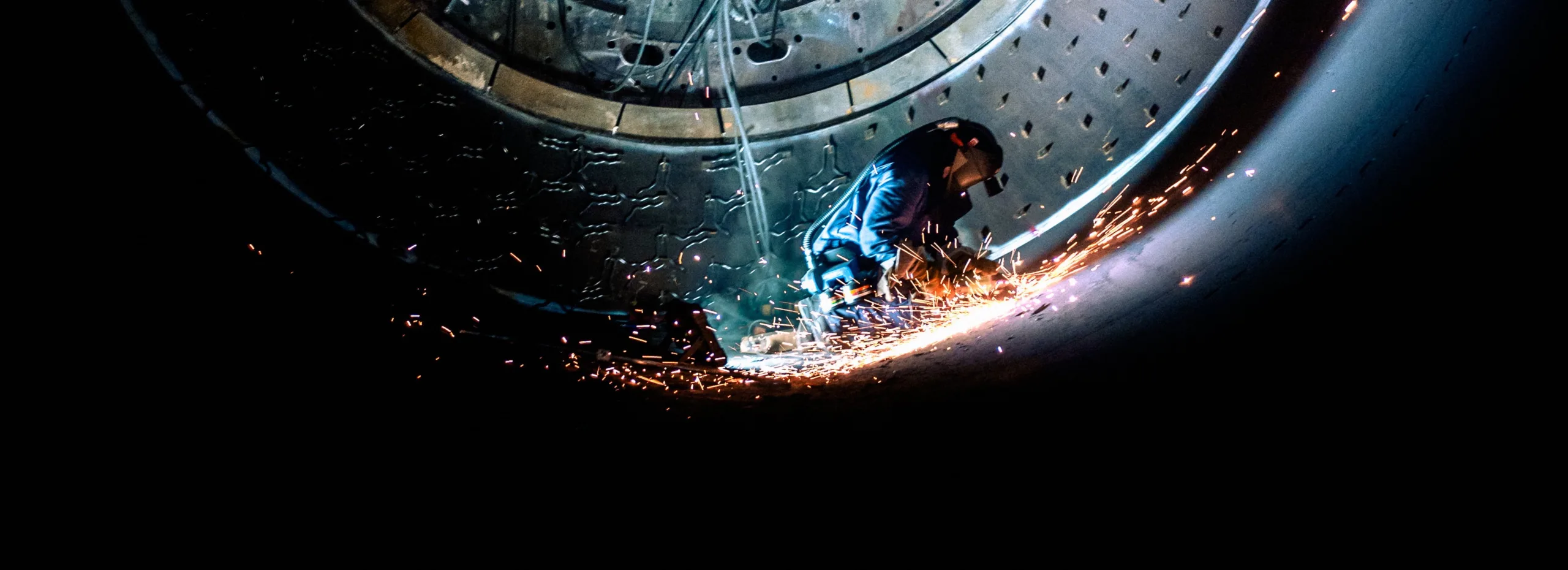Nearly four times higher mineral resources

The intensive exploration work carried out in recent years has meant that the mineral resources at our mines in Svappavaara, Gällivare and Kiruna are nearly four times higher than in 2019.
The exploration results provide a basis for decisions on future investments in mining at even greater depths, as well as for the development of the critical minerals business.
When the results for the new deposit situated north of Kiruna were presented in January 2023, it was Europe’s largest known deposit of rare earth elements. It is fundamentally an iron ore deposit that has higher concentrations of both phosphorus and rare earth elements than the ore from the Kiruna mine. Since the deposit has iron ore as its base, this will allow phosphorus and rare earth elements to be extracted profitably. With the knowledge we have today we estimate that the deposit has the potential to extend the life of the mining by 20 to 30 years.
Phosphorus and rare earth elements are found in a mineral called apatite. We are working in parallel to develop a new method of separating apatite from the iron ore. We plan to do this in apatite plants that will be built directly adjacent to our processing plants. The apatite will then be further processed into phosphorus and rare earth elements at a planned industrial park in Luleå. Phosphorus is used to produce mineral fertilisers. Without mineral fertilisers, global food production would decrease by half. Rare earth elements are crucial for the production of mobile phones, electric cars and wind turbines.
Both phosphorus and rare earth elements are included on Europe’s list of critical minerals. Europe currently extracts no rare earth elements and has only marginal processing capacity.
This means that our investment in circular extraction of phosphorus and rare earth elements as by-products from the existing iron ore mining in our mines and at our future industrial park in Luleå could form part of the solution for the green transformation and a more independent Europe. If the new deposit in Kiruna becomes a mine, it would mean additional expansion potential while at the same time contributing to Europe’s self-sufficiency in the critical minerals needed for our transformation and for the continued competitiveness of European industry.
Mineral reserves och mineral resources

Documents
LKAB is an international mining and minerals group that offers sustainable iron ore, minerals and special products. We are committed to developing carbon-free processes and products by 2045, leading the transformation of the iron and steel industry. Since 1890 we have developed through unique innovations and technological solutions and are driven forward by almost 5,200 employees in 12 countries. In 2023, the LKAB group had sales of about SEK 43 billion.


